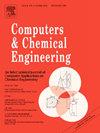在小样本场景下使用发光嵌入变分自编码器进行软测量的虚拟样本生成
IF 3.9
2区 工程技术
Q2 COMPUTER SCIENCE, INTERDISCIPLINARY APPLICATIONS
引用次数: 0
摘要
在工业过程中,物理环境的限制、传感器的脱落和重复采样往往导致代表性实例的不足和分布不均匀,这极大地阻碍了软测量模型的准确性。本文提出了一种基于glow嵌入式变分自编码器(GVAE-VSG)的虚拟样本生成方法,旨在增强数据的丰富性和多样性,从而提高建模性能。具体来说,gvee - vsg将流变换的Glow模型嵌入到变分自编码器中。这允许在不降低样本维数的情况下推导更广义的后验分布,从而确保生成更高质量的虚拟输入样本。随后,采用非线性迭代偏最小二乘回归框架,结合稀疏约束误差矩阵,生成更接近实际数据的虚拟输出样本。最后,通过一个合成的非线性函数和一个实际的纯化对苯二甲酸(PTA)溶剂体系,对所提方法的生成和建模性能进行了综合评价。本文章由计算机程序翻译,如有差异,请以英文原文为准。
Virtual sample generation for soft-sensing in small sample scenarios using glow-embedded variational autoencoder
In industrial processes, limitations of the physical environment, sensors drop-out, and repetitive sampling often lead to insufficient and unevenly distributed representative instances, which greatly hinders the accuracy of soft-sensing models. This paper presents a novel virtual sample generation method based on Glow-embedded variational autoencoder (GVAE-VSG), aimed at enhancing data richness and diversity to improve the modeling performance. Specifically, GVAE-VSG embeds the Glow model from flow transformations into the variational autoencoder. This allows for the derivation of a more generalized posterior distribution without reducing sample dimensionality, thereby ensuring the generation of higher-quality virtual input samples. Subsequently, a nonlinear iterative partial least squares regression framework, incorporating a sparse constrained error matrix, is employed to generate virtual output samples that more closely resemble actual data. Finally, by a synthetic nonlinear function and an actual purification terephthalic acid (PTA) solvent system, the generative and modeling performance of the proposed method are comprehensively assessed.
求助全文
通过发布文献求助,成功后即可免费获取论文全文。
去求助
来源期刊

Computers & Chemical Engineering
工程技术-工程:化工
CiteScore
8.70
自引率
14.00%
发文量
374
审稿时长
70 days
期刊介绍:
Computers & Chemical Engineering is primarily a journal of record for new developments in the application of computing and systems technology to chemical engineering problems.
 求助内容:
求助内容: 应助结果提醒方式:
应助结果提醒方式:


